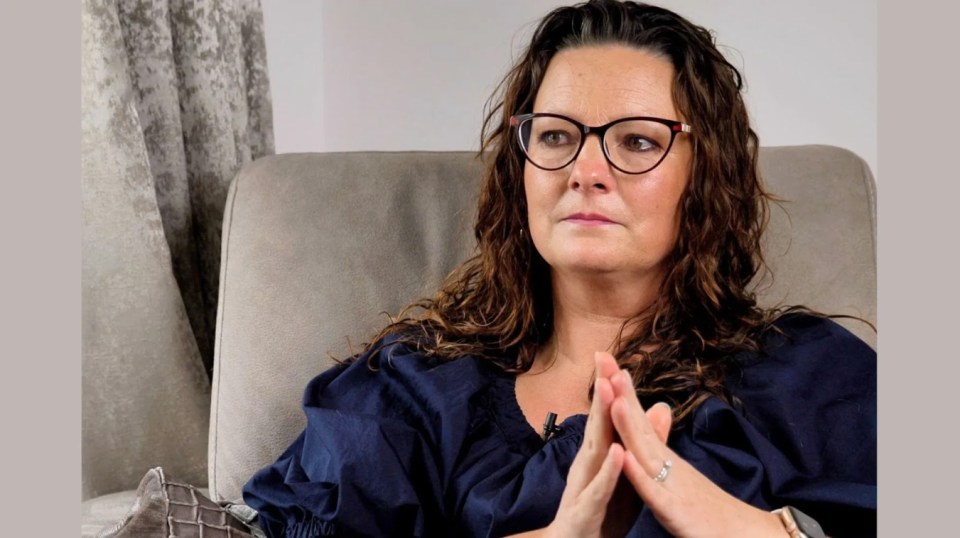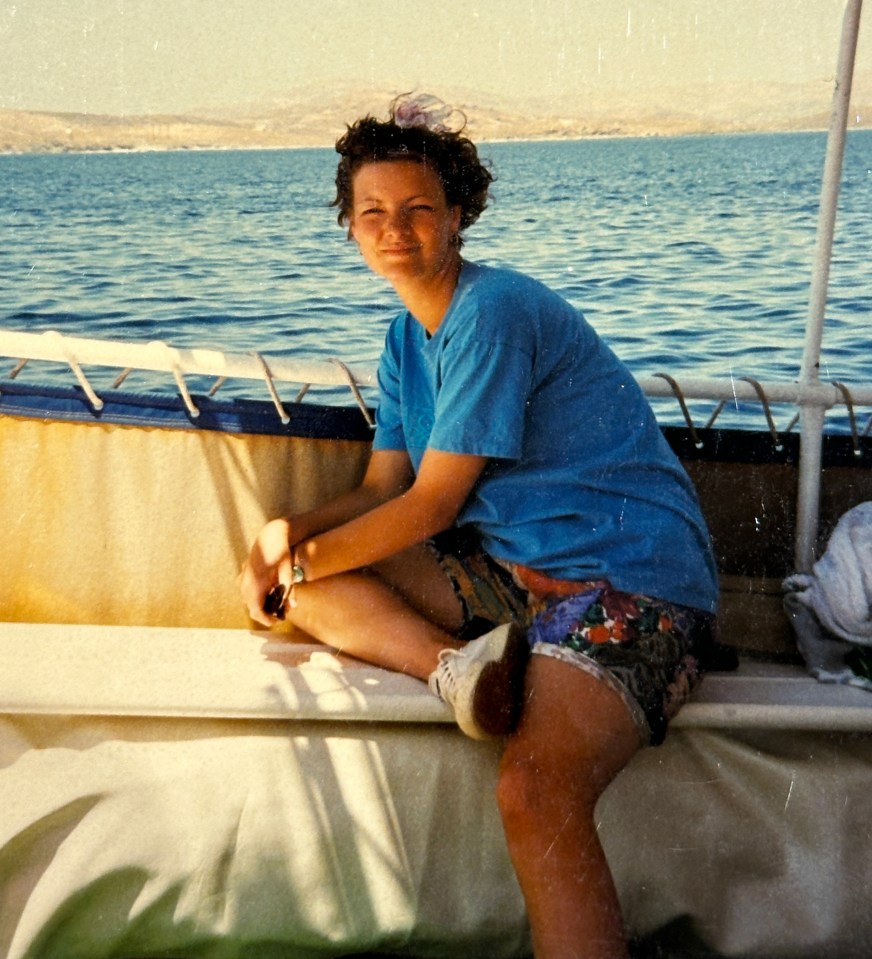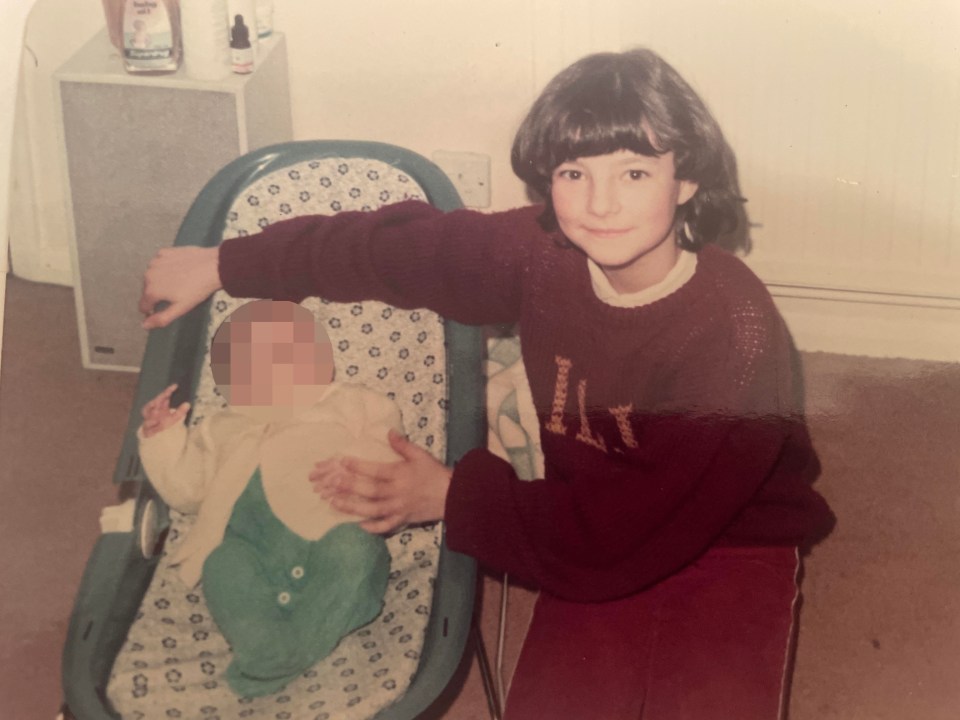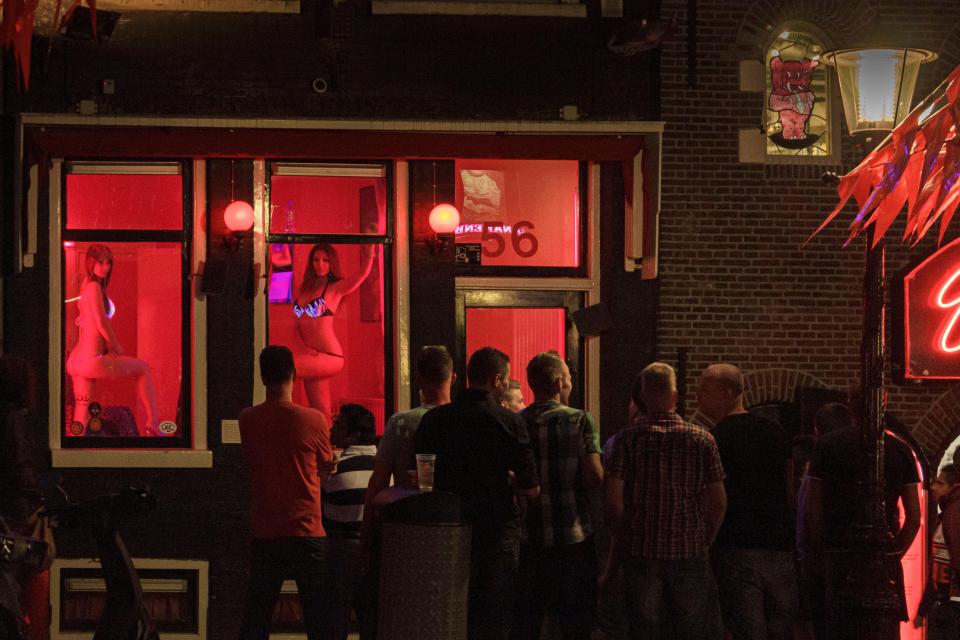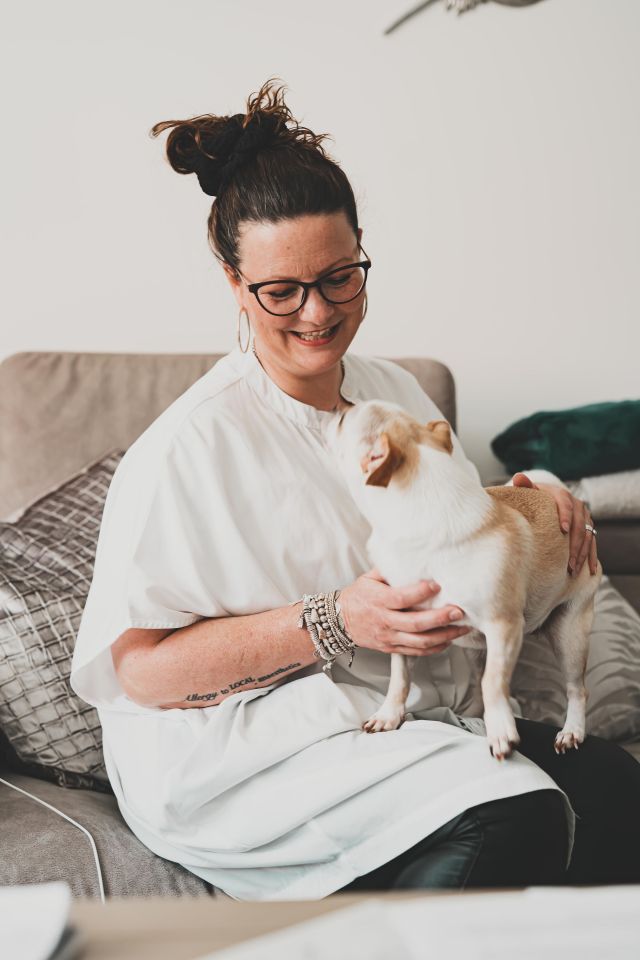“MY first customer was a really old man,” Ilja says, recalling the moment she was first forced to have sex for money. “You just never forget.”
She was only 17 years old when sex traffickers coerced her into prostitution – but she now believes she knows why she was targeted by the gang.
Inja Abbattista remembers the exact moment she realised she was different – it was her fifth birthday and rather than feeling excited by the party, presents and cake, she was consumed by a sense of overwhelming dread.
“I hated the attention being on me – I simply didn’t want it,” she tells Sun Health.
“Everyone thought I was really ungrateful when it came to my birthdays.
“But if I have everyone in the room looking at me, I just want to go into a hole and disappear.”
Ilja believes her hatred of birthdays was the first sign that her brain was wired differently.
It took another 47 years for Ilja, 52, to be diagnosed with both ADHD and autism – but she says it has helped to reframe her entire life.
With a shaky, chaotic home environment, she says she was vulnerable to exploitation from the start.
Child sexual abuse, teamed with moving frequently between homes, left her open to a terrifying spiral into sex trafficking.
Ilja ended up having her life taken over by a trafficking gang for three years between the ages of 17 and 20.
She says she was forced to sleep with 20 men every single day – which amounts to a shocking total of 20,000 abusers in the time she was trafficked – sometimes for as little as £3.
She earned her traffickers more than £1million in three years, but she never saw a penny of it.
Ilja is now convinced that her neurodivergence had a hand in what happened – saying more women should be aware of the link.
Ilja was born in the Netherlands to a Dutch mother and an English father. She lived a normal life until the age of five.
However, when she turned six, her family moved back to the UK to set up a business, settling in Oxfordshire. It was then that everything changed.
Ilja was shipped off to a male family friend who looked after her after school and ended up abusing her.
She says to this day she still doesn’t know whether her mum was aware of what was happening.
Ilja’s mother had been in care from the age of two following severe neglect, and Ilja says she never hugged her and simply didn’t know how to be a loving parent.
“The man would take me to his house alone when his wife and son weren’t there,” she says.
“He somehow convinced everyone that he just wanted to spend time with me because he didn’t have a daughter.
“What’s more messed up is that my mother allowed it to happen.
“Did my mother also have ADHD and autism? Did she know I was being abused? I don’t know.”
What is grooming and where to get help?
What is grooming?
According to the Metropolitan Police, “Grooming is when a person builds a relationship with a child, young person or an adult who’s at risk so they can abuse them and manipulate them into doing things.
“The abuse is usually sexual or financial, but it can also include other illegal acts.”
Types of grooming
Grooming can take place online or in person and it can happen over a short or long period of time – from days to years.
- Online and through social media
- In person
Signs of grooming
- Are they being secretive about how they’re spending their time?
- Do they have an older boyfriend or girlfriend?
- Do they have money or new things like clothes and mobile phones that they can’t or won’t explain?
- Are they drinking or taking drugs?
- Are they spending more or less time than usual online or on their devices?
- Do they seem upset or withdrawn?
- Are they using sexual language you wouldn’t expect them to know?
- Are they spending more time away from home or going missing for periods of time?
A person won’t know they’re being groomed, they will trust their abuser who is giving them lots of attention and gifts. Also, their groomer may have warned them not to talk to anyone about it.
How to get help and support
Grooming is an offence. If you suspect a person is being groomed, even if you’re not sure, please tell someone.
Is someone about to be attacked or hurt? Is a crime taking place right now? If yes, call 999 and ask for the police.
If it isn’t an emergency you can report grooming to the police on 101.
Charities and agencies:
The abuse continued until she was 11.
By then, her parents had split up and her mum took her back to the Netherlands, where she had set up home with a new man. Ilja was sent to a new school where she knew no one.
Walking home on the last day of term, she was raped by a 17-year-old.
Ilja’s behaviour began to deteriorate thanks to the lack of support at home and likely PTSD from her abuse.
My first customer was a really old man. At that point it doesn’t really matter who they are because it’s going to be disgusting whoever it is
Ilja Abbattista
She ended up grounded constantly as she’d leave in the night to wander the streets of Rotterdam.
Before long, her mum and stepdad sent her back to the UK to live with her dad.
“He did the best he could,” Ilja says. “I was quite independent, so he probably didn’t think I needed much, but I did.
“I was on my own a lot and incredibly lonely – it meant I was open to being exploited.”
Within six months, Ilja’s mum begged her to come back to Rotterdam, and she reluctantly agreed. But her mum had soon had enough of her and sent her to a children’s home. She was 14.
“I came home after spending the weekend with my nan and all my stuff was in black bin liners,” Ilja says. “I didn’t have a clue what was going on.”
She moved between six or seven children’s homes over the next three years.
At 17, she and other teens at the same home were given priority for social housing, and Ilja got her own flat in Rotterdam.
A friend from the children’s home lived a few streets away, and the pair supported each other, cooking meals together and watching movies into the small hours.
Little did Ilja know that her so-called pal was likely working for a criminal gang, grooming girls to work for them as prostitutes.
Initially, gang members told her she could earn £40,000 by taking part in a sham marriage, where she would agree to wed a man she’d never met.
With debt from a college course she had quit, Ilja agreed, and gave them her passport – but she was told not to mention the agreement to anyone.
When nothing happened, she confided in a ‘friend’ – but he was actually a plant who told the boss who summoned her to see him.
Brandishing a gun, it was then that Ilja knew she was in deep trouble.
AN IMPOSSIBLE CHOICE
He told her that she could either lose a finger, have a family member killed or work for the gang for a week. Ilja felt she had no choice but to work.
She was told to go home and put on her sexiest outfit before being driven to a plush gentlemen’s club, where she was forced to have sex with men for cash.
She says she will “never forget” the first customer she was forced to have sex with – a “really old man”.
“At that point, it doesn’t really matter who they are because it’s going to be disgusting whoever it is,” Ilja adds.
After the first week, it became clear she was a prisoner.
Every morning, she was taken to a house where men would call up and then arrive for sex.
After an eight-hour shift there, Ilja was driven to the club where she worked until 5am.
Her pimp then took her home, where more men were usually waiting to bed her. But there was worse to come.
Ilja was made to work in the dirtiest, seediest windows in the red light district of the Hague, having sex for £3 a time.
In a house in Germany, she had intercourse with 42 men in one day, which left her so badly injured she was unable to walk.
The gang then took her to more upmarket places, where her target was to earn 1,000 guilders (about £400) a day, meaning sex with roughly 20 men a night.
It was here that Ilja felt her neurodiversity may actually have helped her deal with the situation.
“Nobody talked about neurodiversity, no one knew what it was, but at this point I knew my brain was different,” she says.
“I was different from the girls I was working with. I learnt how to earn more money without doing as much.
“I learnt to listen, I learnt to recognise patterns.
“They started to trust me, so they left me alone. That’s hypervigilance and hyperfocus, both common in ADHD.”
Autism vs ADHD
AUTISM is not an illness, but a difference in the way the brain works.
No one knows what causes it, though it sometimes runs in families.
In adults, it can manifest as having trouble understanding what others are thinking or feeling. Anxiety about social situations is common, as is taking things literally and struggling to make friends.
Sometimes, autistic people prefer being alone, have intense interests and have to stick rigidly to routines.
Autism is life-long but many adults learn to ‘mask’ symptoms.
ADHD – or attention deficit hyperactivity disorder – usually presents itself before the age of 12. Again, it means the brain works slightly differently to those who are neurotypical.
In children, it will often seem that they struggle to pay attention, have lots of energy and can be impulsive.
In adults, there are a myriad of symptoms, including an inability to finish tasks, failing to do things that require long periods of attention, and excessive talking and interruption.
Until 2013, autism and ADHD were thought to be mutually exclusive. But now, experts say both conditions can coexist in the same person.
A study by Duke University found that up to half of people diagnosed with autism also exhibit ADHD symptoms, and the characteristics of autism are present in two thirds of people with ADHD.
Overlapping traits include sensory differences, intense focus on specific interests, rejection sensitivity, sleep issues, and emotional dysregulation.
Diagnosis of both conditions together are thought to be on the rise, perhaps due to more people sharing their stories of what is now being dubbed ‘AuDHD‘ on social media.
The contradictory traits of AuDHD can cause serious mental health challenges. Patients are up to 13 times more likely to try to take their own life than the general population, according to University of Cambridge researchers.
One in four women with ADHD also attempt suicide, and accidental death is also common, NHS data shows.
If you need advice, speak to your GP or contact the charity ADHD UK. For urgent help, call the Samaritans on 116 123. You are not alone.
Aged 19, Ilja was at work in Amsterdam when her mental health reached a crisis point.
One night, she went home, lined up some pills, and took them all.
She had her stomach pumped, her contraceptive pill failed, and when she returned home, she was raped by her pimp, falling pregnant.
Three months later, she had a miscarriage at work.
Now earning the gang huge amounts on money, they relaxed her schedule a little, allowing her more time to rest.
During one trip to Antwerp, her minders returned her passport, and she made a few friends who helped her forge a plan to get away.
She told the gang she wanted cosmetic breast enhancement to help her earn more.
But when she arrived at the clinic, she legged it out of the back door and her new friends picked her up and drove her to safety.
When I first found out I had ADHD, part of me felt immense grief
Ilja Abbattista
In a desperate bid for answers, Ilja returned to Rotterdam to demand her pimps tell her why they had targeted her.
She says this is absolutely typical of ADHD because she would act before thinking things through.
A fight ensued, and she only just escaped with her life – eventually getting on a boat to the UK, where her dad picked her up.
A few months later, her mum fell ill with Creutzfeldt-Jakob disease – a rare and fatal condition that causes brain damage that worsens rapidly over time.
There are four main types of CJD, one of which is likely to be caused by consuming meat from a cow that had bovine spongiform encephalopathy (BSE, or ‘mad cow’ disease).
Ilja concentrated on fighting for justice for sufferers, taking her mind off her horrific past. She believes this hyperfocus was again her ADHD in action.
After her mum’s death, she did a catering course and had two children with her boss.
Although the relationship broke down after 18 years, she says she has done everything to give her kids the stable upbringing she never had.
Ilja is now a successful businesswoman who works with charities to speak out about modern slavery and trafficking, and hopes to highlight a potential link to neurodiversity.
Just last year, she was diagnosed with ADHD after her therapist recommended she have an assessment. An autism diagnosis soon followed.
Ilja now recognises that she probably wouldn’t have been as vulnerable to trafficking without those conditions and wants a sea change in how schools, children’s homes and councils look after neurodiverse kids.
Early diagnosis is critical to stop people slipping through the cracks, she believes.
“When I first found out I had ADHD, part of me felt immense grief. It meant that I wasn’t seen,” she says.
“I’d moved about so frequently that nobody had the time to look at what was actually happening to me.
“With ADHD, we feel deeper, we don’t necessarily read cues that well, we people please, we don’t want to upset things.
“So for example, with my friend, because she introduced me to these people, even though I felt that something was wrong, the last thing I wanted to do was show her up.
“From everything I’ve learnt, with ADHD you take more risks, you don’t think things through, you just go with it.
“You don’t want to do anything that jeopardises that feeling of being wanted. That is the hook they then hang onto.”
Who is most at risk of human trafficking?
HUMAN trafficking involves the use of force, fraud, or coercion to obtain some type of labour or commercial sex act.
Every year, millions of men, women, and children are trafficked worldwide – including right here in the UK.
It can happen in any community and victims can be any age, race, gender, or nationality.
Traffickers might use the following methods to lure victims into trafficking situations:
- Violence
- Manipulation
- False promises of well-paying jobs
- Romantic relationships
Language barriers, fear of their traffickers, and/or fear of law enforcement frequently keep victims from seeking help, making human trafficking a hidden crime.
Traffickers look for people who are easy targets for a variety of reasons, including:
- Psychological or emotional vulnerability
- Economic hardship
- Lack of a social safety net
- Natural disasters
- Political instability
Spotting the signs of trafficking or sexual exploitation can be difficult. But the following could indicate someone is being exploited sexually:
- They may appear scared or intimidated
- Appearing frightened, withdrawn or confused
- They’re closely guarded
- “Branded” with a tattoo indicating ownership
- Signs of physical abuse, including bruising, scarring and cigarette burns
- Are unable to keep payment and have restricted or no access to their earnings
- Have limited English vocabulary, restricted to sexualised words
- Male visitors call day and night and who only stay for a short time
- There are signs of sexual activity, such as cards and advertisements nearby
- A number of female foreign nationals living at the same address
- Sleeping at the premises where they work could indicate a brothel is operating.
Source: Blue Campaign and Unseen
A common thread in those with ADHD is also rejection-sensitive dysphoria – an extreme reaction to rejection or criticism.
Ilja, who lives in Oxfordshire, says she would even feel this when she had a perceived rejection from her abusers, as she was terrified of being dumped on the streets.
However, she does think her neurodiversity allowed her to disassociate from the harrowing events of her teens.
Ilja, who runs a cookery school, adds: “A lot of people that have ADHD or autism have the ability to disassociate.
“I have dissociated myself from those events. It’s almost like I’m not talking about myself. It’s protective.”
She also says that all her life she has struggled to build relationships but has now been seeing someone for seven months.
She is keen to spread the word to help others with neurodiversity avoid being exploited.
“There is no therapy for neurodiverse victims of sex trafficking and that’s what I’m looking into,” Ilja says.
“I want to help people that have ADHD and/or autism and trauma to understand that it isn’t their fault and they can live happy, fulfilling lives.”


